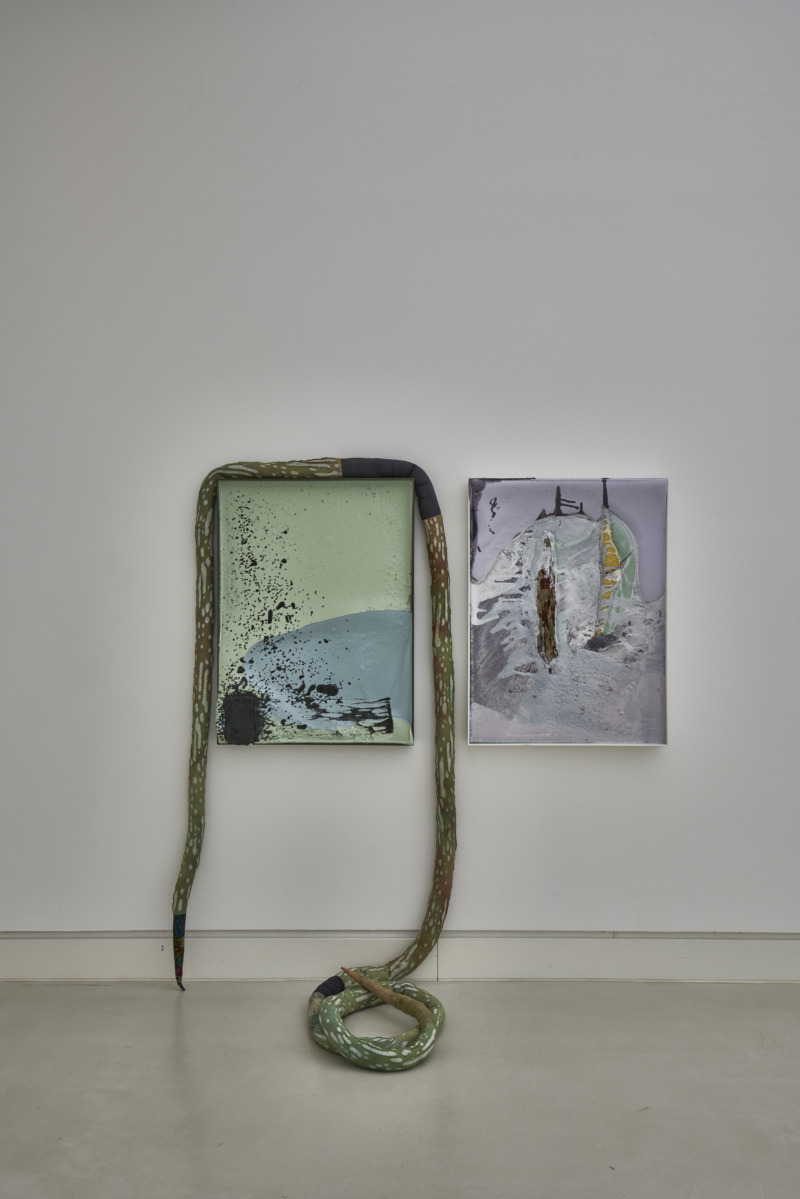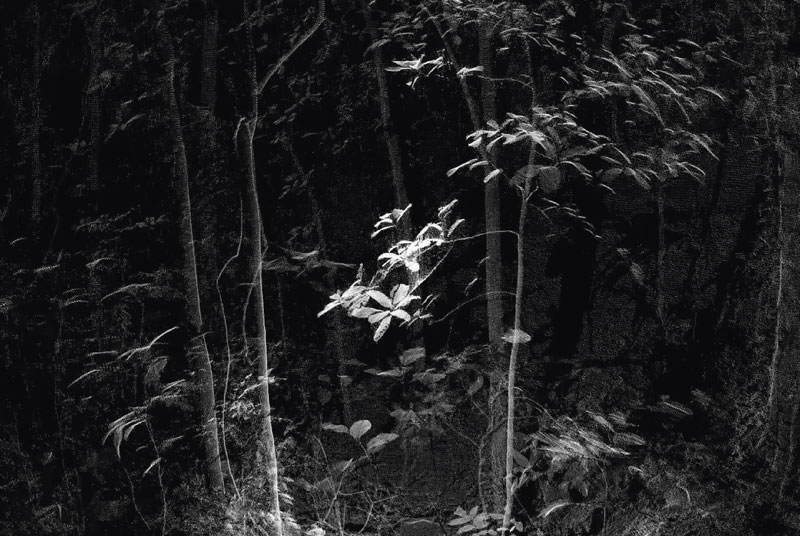
Biotopia
31/03/17—30/07/17
Julian Charrière
David Claerbout
Daiga Grantina
Dominique Koch
Elodie Pong
Daniel Steegmann Mangrané
Monica Studer/Christoph van den Berg
Phillip Zach
Today, in the Anthropocene era, human beings have become the determining factor in evolution. According to the Mainz-based atmospheric chemist and Nobel prizewinner Paul J. Crutzen, for thousands of years humanity was forced to stand its ground against the primacy of nature, but this relationship was turned on its head at the very latest with the advent of industrialisation. This exhibition presents a generation of artists who, mindful of the way in which people are controlling and threatening nature, are on a quest for alternatives to the evolutionary dead end.
In their desire to distil essences and construct models which can serve as potential counter-concepts, or at least approaches for changing the way we think, the artists have made their way to the most distant corners of the earth, parts of nature that have hitherto been virtually unexplored. From the last-remaining sanctuaries of the jungle and the depths of the ocean, they have devised computerised simulations, biological experiments, and futuristic biofictions. They have chased down the paradox of an untouched nature created by humankind, mixing philosophically critical and animistic thought with elements taken from the life-sciences, bio-engineering, and geo-engineering. At the same time, the artists have utilised state-of-the-art technologies for creating images and editing material.
By means of virtual reality, computer animation, and 3D printing they have generated pictures that range from enchantingly beautiful to confusingly hyperreal. The works oscillate between post-apocalyptic scenarios and alternative eco-visions, between poetically abstract representations and utterly tangible DIY ideas. And although people are nowhere to be seen in the exhibition, the hand of human construction is recognisable in all the works. Something that at first glance might appear natural and unadulterated is actually always literally (hu)man-made. The artists are walking on a tightrope between alternative visions and the dysfunctional dynamics that inevitably loom when people meddle irrevocably in natural processes. This is connected to criticism of the anthropocentric and profit-driven concept of society that sees nature as a resource to be exploited rather than an end in itself. Ultimately, the exhibition is scrutinising humanity’s understanding of itself as a species. Yet in their search for perspectives which seamlessly incorporate ecological and technological developments, the works sound out the current dilemma about the future, which fluctuates between carefully preserving the fragile coexistence of people and nature on the one hand, and radical measures concerning apocalyptic dynamics on the other. Balancing these could ultimately even destabilise human control, creating space for a post-humanist era where nature and technology join forces against humankind. In these speculative scenarios about the future, the dualisms of nature and technology, fact and fiction, and optimism and pessimism cannot be easily separated.
The Brazil-based artist Daniel Steegmann Mangrané lets us experience a section of the Brazilian rainforest in 3D with brand-new virtual reality technology. Julian Charrière, a Swiss artist who has settled in Berlin, presents an oversize fridge with frozen tropical plants, whose origins stretch back to the Cretaceous period. In conserving these prehistoric relics, the artist has established a link through to the future. The Swiss duo Studer/van den Berg put a virtual simulated primordial soup on to boil, depicting this ominous dark material in digital form. By contrast, American artist Elodie Pong, who lives in Zurich, examines the idea of virtually conserving endangered species which are synthetically produced for the perfume industry, getting these plants to regrow in a 3D printer. Phillip Zach is interested in worms, a primeval life form which has been particularly badly hit by the human obsession with research. The worm appears as a metaphor for a world which has been quintessentially shaped by humans. Latvian Daiga Grantina has invented hybrid objects and sculptures from artificial materials, which seemingly colonise the exhibition space as constantly metamorphosing, semi-transparent organic creatures, generating speculation about a science-fiction future featuring hybrid bodies. Working on a computer, David Claerbout from Belgium has designed a meditative filmic journey through generic pictures of idyllic forests, accompanied by New Age sounds, which create a sense of relaxation in a non-existent illusory space. In a bio-laboratory specially erected in the Kunsthalle, self-proclaimed biohackers Baggenstos/Rudolf & Hackteria experiment with disused electrical waste and conjecture about the future of nature in a cyborg age. At the same time they have organised a DIY workshop in conjunction with Hackteria, a collective of scientists and artists, and are investigating the opportunities and risks of current technologies for manipulating genes. Swiss artist Dominique Koch has established the biological feasibility of a type of jellyfish attaining potential immortality as a metaphor for the capitalist economic model.
Curated by Sabine Rusterholz Petko, art historian and freelance curator, Zurich
The exhibition is supported by:
Kultursommer Rheinland-Pfalz
Pro Helvetia – Schweizer Kulturstiftung
Mainzer Volksbank eG

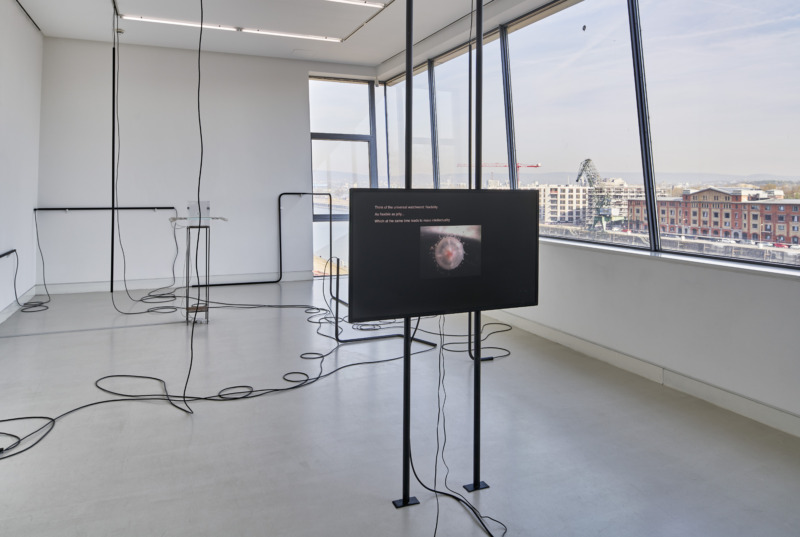
Installation view: Dominique Koch: Perpetual Operator, 2016
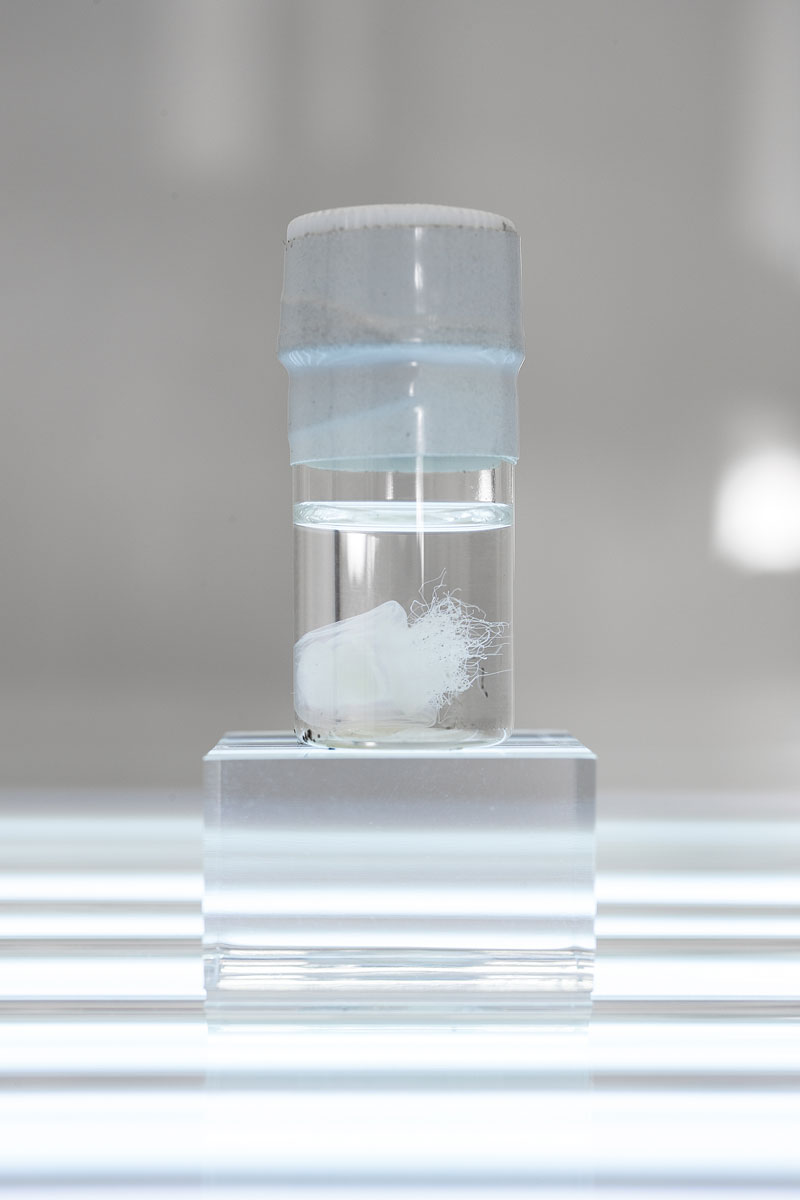
Installation view: Dominique Koch: Dead Immortal Jellyfish (Detail), 2016
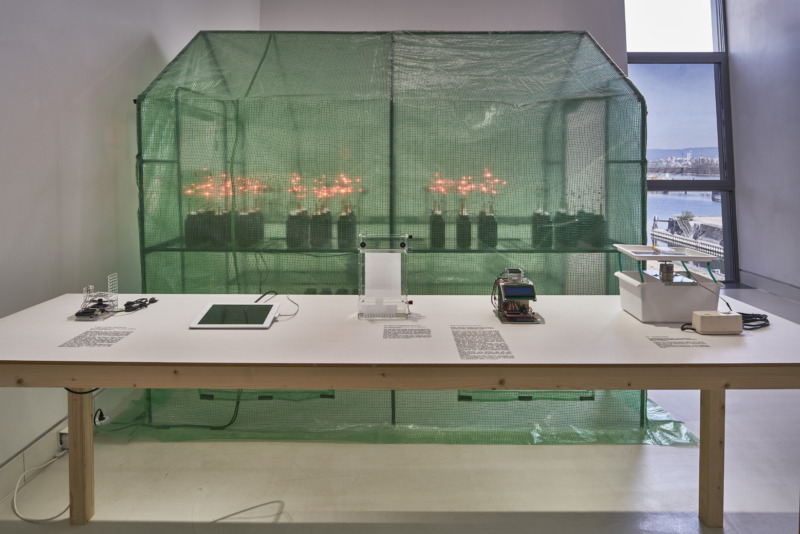
Installation view: Baggenstos/Rudolf & Hackteria: Young Breed, Do androids dream of electric plants?, 2017
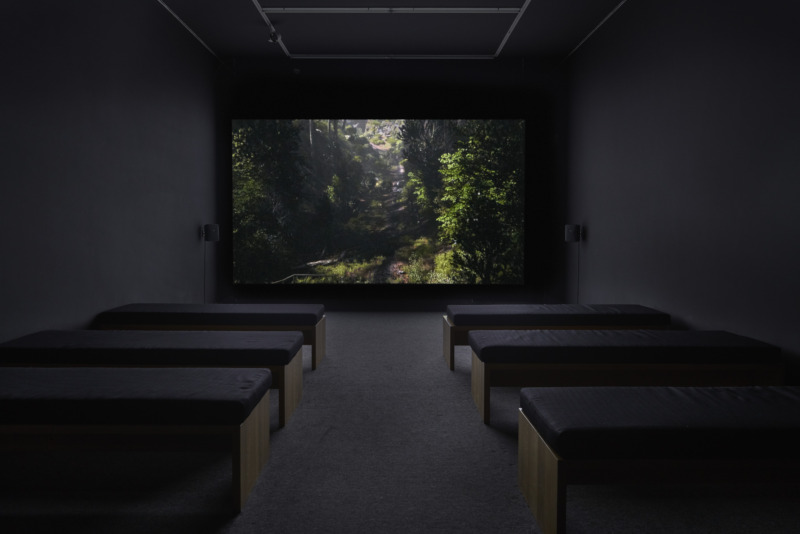
Installation view: David Claerbout: Travel 1996-2013, Courtesy David Claearbout, galleries Sean Kelly, Ester Schipper
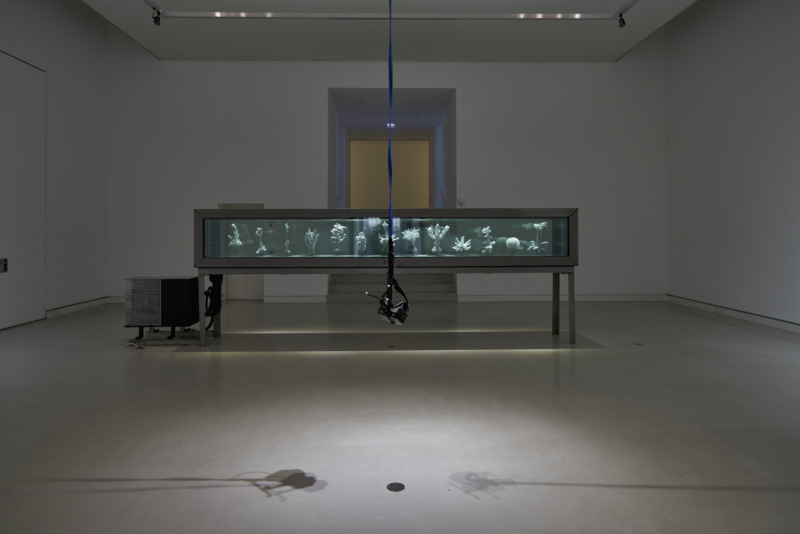
Installation view: Daniel Steegmann Mangrané: Phantom (kingdom of all the animals and all the beasts is my name), 2014-2015; Julian Charrière: Tropisme, 2015
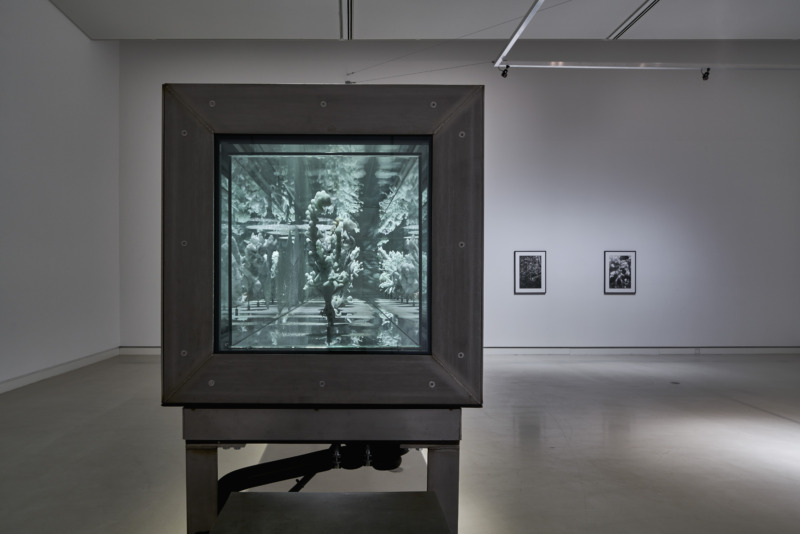
Installation view: Daniel Steegmann Mangrané: Spiral Forest, 2015, Courtesy D. Steegmann Mangrané, Esther Schipper; Julian Charrière: Tropisme, 2015
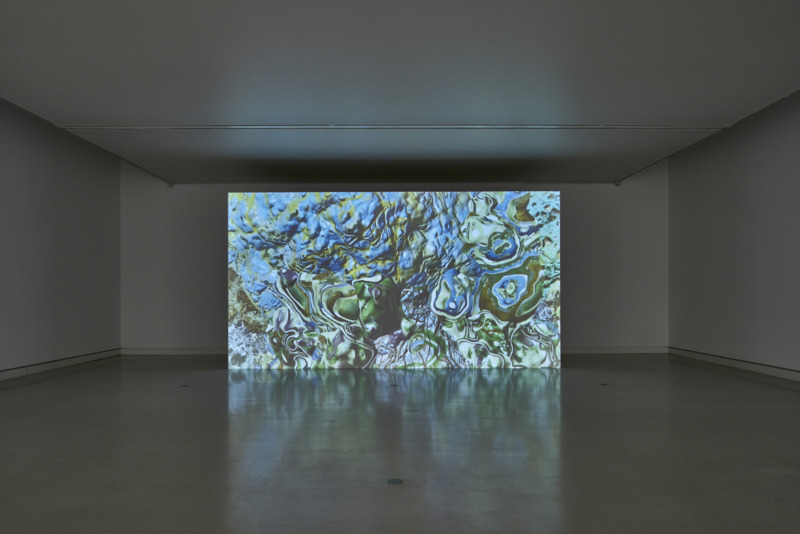
Installation view: Monica Studer/Christoph van den Berg: Stranger, 1999
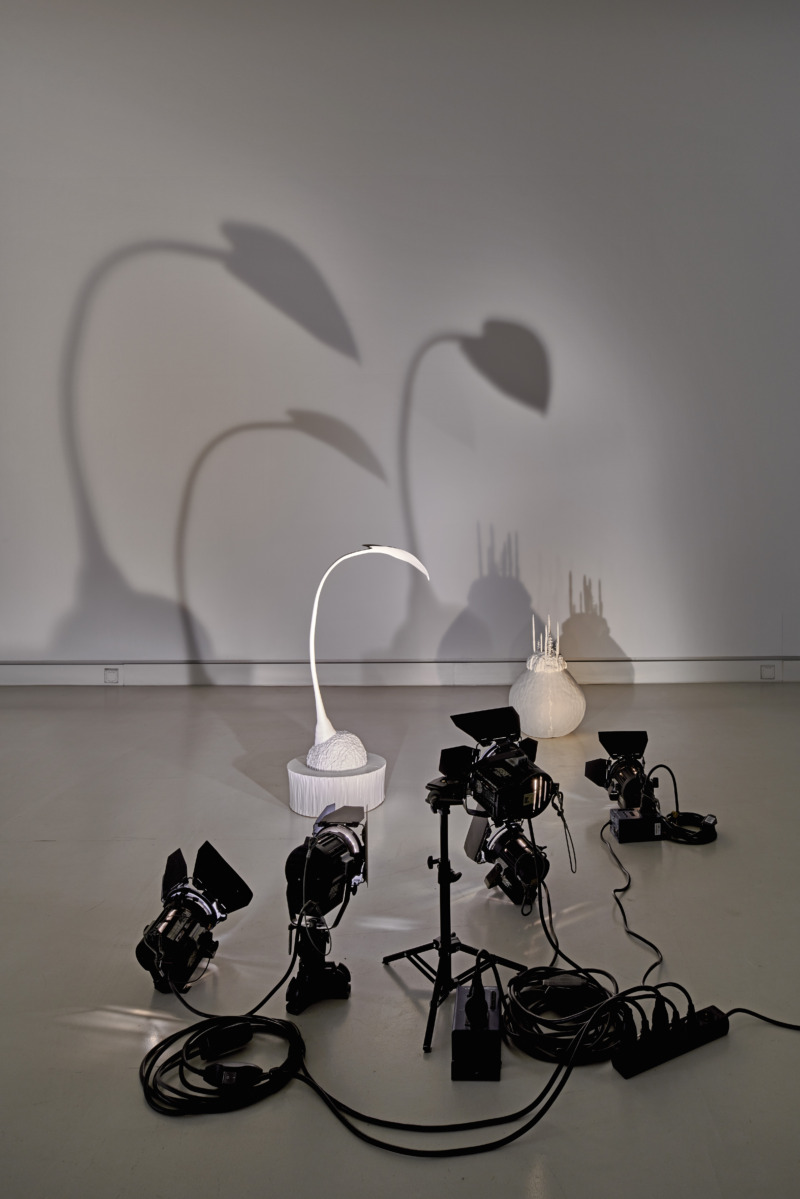
Installation view: Elodie Pong: Scent Print B (leaf), 2016
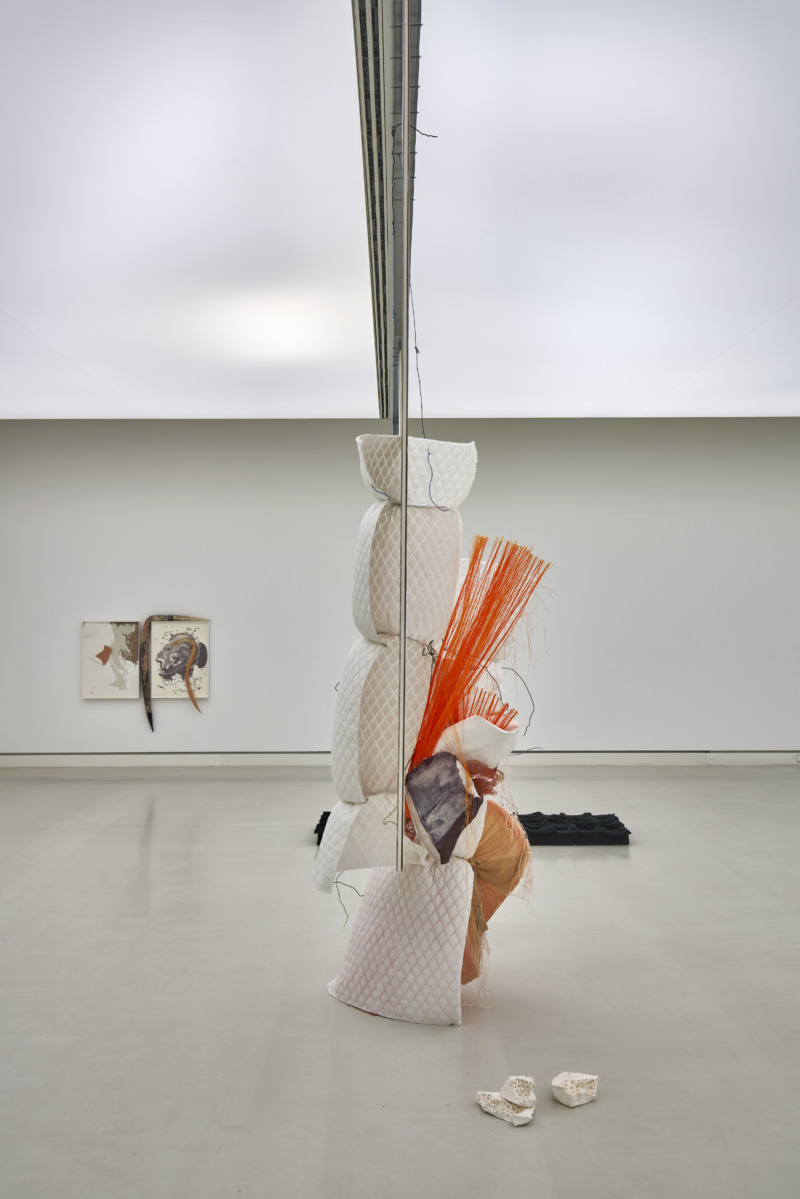
Installation view: Daiga Grantina: Sleep walls for family frame, 2017; Phillip Zach: Untitled (skid), 2016, Courtesy Freedman Fitzpatrick
